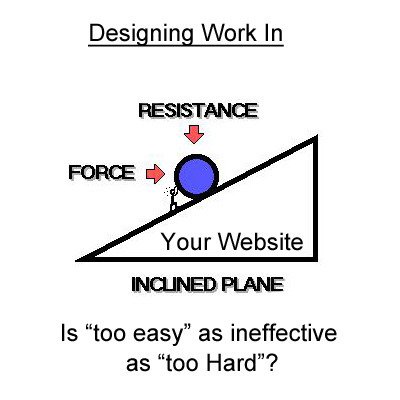When In Doubt Ask
Alejandro Aravena makes it clear participation isn't easy, but the advantages of including those you server IN the decision process far outweigh the pain. Aravena is asking about housing and public space.
Internet marketers and ecommerce teams need to be asking about changes to their "public space" - their websites. The synthesis between designers and community discussed in this TED talk become a model for web design too with lessons like:
* Don't try to defeat natural forces (Google) incorporate them.
* Build flexible frameworks customers can modify.
* Individual expression happens.
That last bullet my represent the hardest transition for most web designers. We are so used to drawing boxes within boxes we forget those boxes are meant to serve PEOPLE. Hard to forget when those people are included, consulted and actually listened to all along.
Look at what has already happened. We created a web o one way communication that was modified, cloned and spun back to us by the social web as two way community. Why so much resistance to two way community?
Lack of perceived control may be the culprit. Learning to love the friction of Aravena's "synthesis" requires placing ego firmly in back pocket and listening. Who wants to do that?
The future of web design TURNS on our ability to adapt many of the architectural principles Aravena discusses so articulately in this excellent TED Talk. He may be discussing buildings in Chile, but he could be discusses our client http://www.Moon-Audio.com.
The future is about a building a DIFFERENT kind of framework one that encourages a growing number of Ambassadors willing to sacrifice to stamp their impression on YOUR web design.



 Your new post is loading...
Your new post is loading...

![Web Design What's Next? Flexible Frameworks with Community Like Alejandro Aravena's Architectural Philosophy [TED Talk] | Must Design | Scoop.it](https://img.scoop.it/CDQoOBimzHnv9SQX3MIMdTl72eJkfbmt4t8yenImKBVvK0kTmF0xjctABnaLJIm9)







